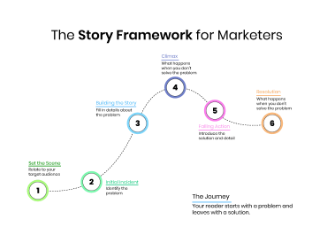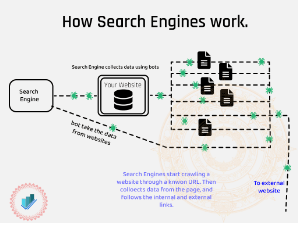Target the correct audience through proper management of SEO content
Did you know that more than 100,000 searches are processed every second? More than 5 billion internet users are making around 9 billion searches every day. Many of these searches end up as verified purchases. This has made SEO content the number one inbound marketing priority for marketers.
After all the right SEO content equals greater reach and more clients making business better overall.
However, SEO copywriting comes with its challenges. The main aim is to generate organic traffic which means competing for the top spots on search result pages. So, SEO copywriting for search engines is not only targeting humans but also bots.
So, who should you write for? To answer this, you need to understand how these two sectors of audiences compare.
Writing SEO content
Proper SEO for content marketing needs to successfully target both humans and bots. You need to target the bots to bring in the humans who will make the actual purchase. But bots and humans are two different entities who are satisfied by different aspects. So, who should you prioritize?
SEO content for Humans
Content marketing for humans is a tricky affair. Humans are the ones who will read content, make the purchasing decision based on that content, and ultimately become the customers. Their decision will need information regarding the product details and pricing. But beyond these quantitative factors, humans need qualitative factors too – factors that appeal to their empathy and emotional reasoning. So, content marketing for humans needs to be in a storytelling format that will make them react emotionally.
SEO content for bots
Even if you prepare the best SEO content for humans, until the bots highlight it, humans will not be able to access it. Bots refer to search engine crawlers or spiders which influence the position of your content on Google’s search engine results pages (SERPs). They are not moved by emotional intelligence. Your content marketing then needs to move beyond the emotional appeal as bots react to SEO-oriented content. So, your SEO content needs proper heading structure and keywords to make it simpler for search engines to understand the context of your material.
Picking the audience for content marketing
From the above viewpoint, we can understand that we need to pick both humans and bots when writing content for marketing purposes.
An updated search algorithm by Google which processes natural language more efficiently along with proper measurement of the performance metrics affecting users has ensured that content for humans and bots are not mutually exclusive. This has ensured that now you can create SEO content that delivers for both sets of audiences.
7 tips on writing SEO content for both humans and bots
Balance – the keyword when writing for both humans and bots. You need to find the middle point in your content that satisfies both groups. Given below are certain points that you should keep in mind while writing SEO content that will help you improve your content marketing strategy and get you more organic traffic.
1) Optimal word usage
Humans are attracted to words that are easy to understand and do not make them open another tab to learn the meaning. Bots are similar in this regard. Your content should not read like an obscure thesis paper filled with long, barely comprehensible multisyllabic words. It should not also resemble a badly written fanfiction filled with fluff terms and adjectives to reach the word count.
Pro tips
- Points to remember while writing for humans –
- Use specific terms – quantify your data
- Be inclusive – Use they instead of he/she
- Do not insult your reader’s intelligence – avoid words like clearly, obviously, etc.
- Points to remember while writing for bots –
- Be concise
- Establish your context
2) Use a standard reading level
Your content should have a reading level that resonates with the masses. Remember that your human audience is not reading your content to solve world hunger. A tougher reading level will not have a direct impact on your SEO ranking. But it affects the dwell time and subsequent bounce rate which has an impact on your SERPs ranking.
Pro tips
- Use an app like the Hemingway Editor to determine your Flesch Reading Ease score.
- We also recommend the use of active verbs, shorter sentences, and the use of transitions to increase readability.
3) Structure your content
Quick question – are you benefiting from the headings and the subheadings in this post? If yes, then you understand the importance of structuring your content. When your content is well structured, both humans and bots can understand the context and the information you want to share.
Pro tips
- Use primary and supporting keywords in your headings to optimize your content for bots.
- Include a table of contents at the top of your written piece.
4) Include visuals in your SEO content
A diagram is more efficient in imparting information than a big excel sheet filled with data. User experiences are enhanced when visuals in the form of infographics, statistics, graphs, GIFs, and embedded videos are used.
Google advises utilizing high-quality photos and compressing the files to ensure they don’t slow down your page speed when optimizing images for search bots. Additionally, you should include keyword terms in the file name and other descriptive information (such as the title and caption) as appropriate.
Pro tips
- Avoid using irrelevant stock photos.
- Pay attention to your alternate text (alt-text)
5) Grammar is important
No, you do not have to be a grammar Nazi but if your content has good grammar and spelling it increases your content’s authority score. It also builds trust with your readers. Spelling is very important. Particularly when it comes to spellings of brand names. Remember the infamous Kim K / Armani incident.
Pro tip
- Use Grammarly!
6) Length of your content
Content length does not affect SEO ranking. But long-form material could rank better since Google prioritizes thorough responses to search phrases. However, the writing quality should not be affected while trying to reach the word count.
Pro tip
- Use Clearscope which gives word count recommendations depending on how long the top-ranking pages are concerning a certain topic.
7) Write an eye-catching page title
Page titles should catch the attention of both bots and people. Appropriate titles increase your chances of ranking for the appropriate keywords and provide search engines with additional context.
Pro tips
- Your SEO title tag and meta description must contain the target term for the bots.
- Use emotive language, establish a sense of urgency and personalize your titles to appeal to humans.
Conclusion
It’s not an issue of people vs machines when it comes to creating SEO-friendly content, but rather how to optimize for both. If you want to produce content that ranks on SERPs and appeals to potential consumers, the 7-steps on writing SEO content in this article is a great place to start.
You can also contact us to provide you with a proper SEO-based content marketing strategy at support@sunnydayconsulting.com or call us at (+91) 79777 31552





